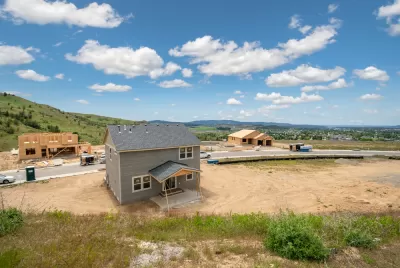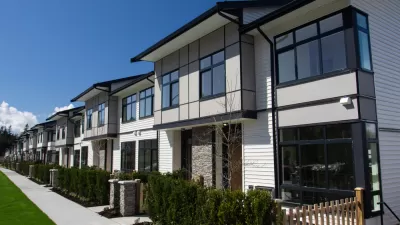With demand for housing in Eastern Washington rising steeply, the region could benefit from zoning reform that encourages small and mid-sized multifamily developments.

In an opinion piece in Inlander, housing developer Jim Frank argues in favor of zoning reform in Eastern Washington, where housing costs have risen dramatically along with demand in the last decade. "Over the past 10 years, we've taken housing affordability for granted. We thought it was a staple that we would never lose. In 2010, the median home price was about $160,000 — and we were worried about it going down."
While the first signs of growth were heralded as a positive development for the local economy, Frank writes, that soon changed. "The trickle of growth turned into a stream, then surged into a COVID migration-swollen river. The regional growth rate is now well over 2 percent a year, while the median home price is nearly $400,000." For Frank, "This rapid price escalation is a result of our complacency and a failure to build enough housing to accommodate our population."
"We need to allow a wide variety of housing types in every neighborhood. When you look around Spokane, what you see are single family homes on large lots, along with large multifamily projects. There is virtually nothing in between."
Frank calls for revisions to local zoning codes that allow more 'missing middle housing' such as townhomes and small multifamily buildings. "How we build neighborhoods and regulate housing has to change in ways that encourage infill. Regardless of economic status, families need to be welcomed into all of our neighborhoods."

Alabama: Trump Terminates Settlements for Black Communities Harmed By Raw Sewage
Trump deemed the landmark civil rights agreement “illegal DEI and environmental justice policy.”

Study: Maui’s Plan to Convert Vacation Rentals to Long-Term Housing Could Cause Nearly $1 Billion Economic Loss
The plan would reduce visitor accommodation by 25% resulting in 1,900 jobs lost.

Planetizen Federal Action Tracker
A weekly monitor of how Trump’s orders and actions are impacting planners and planning in America.

Waymo Gets Permission to Map SF’s Market Street
If allowed to operate on the traffic-restricted street, Waymo’s autonomous taxis would have a leg up over ride-hailing competitors — and counter the city’s efforts to grow bike and pedestrian on the thoroughfare.

Parklet Symposium Highlights the Success of Shared Spaces
Parklets got a boost during the Covid-19 pandemic, when the concept was translated to outdoor dining programs that offered restaurants a lifeline during the shutdown.

Federal Homelessness Agency Places Entire Staff on Leave
The U.S. Interagency Council on Homelessness is the only federal agency dedicated to preventing and ending homelessness.
Urban Design for Planners 1: Software Tools
This six-course series explores essential urban design concepts using open source software and equips planners with the tools they need to participate fully in the urban design process.
Planning for Universal Design
Learn the tools for implementing Universal Design in planning regulations.
Caltrans
Smith Gee Studio
Institute for Housing and Urban Development Studies (IHS)
City of Grandview
Harvard GSD Executive Education
Toledo-Lucas County Plan Commissions
Salt Lake City
NYU Wagner Graduate School of Public Service





























